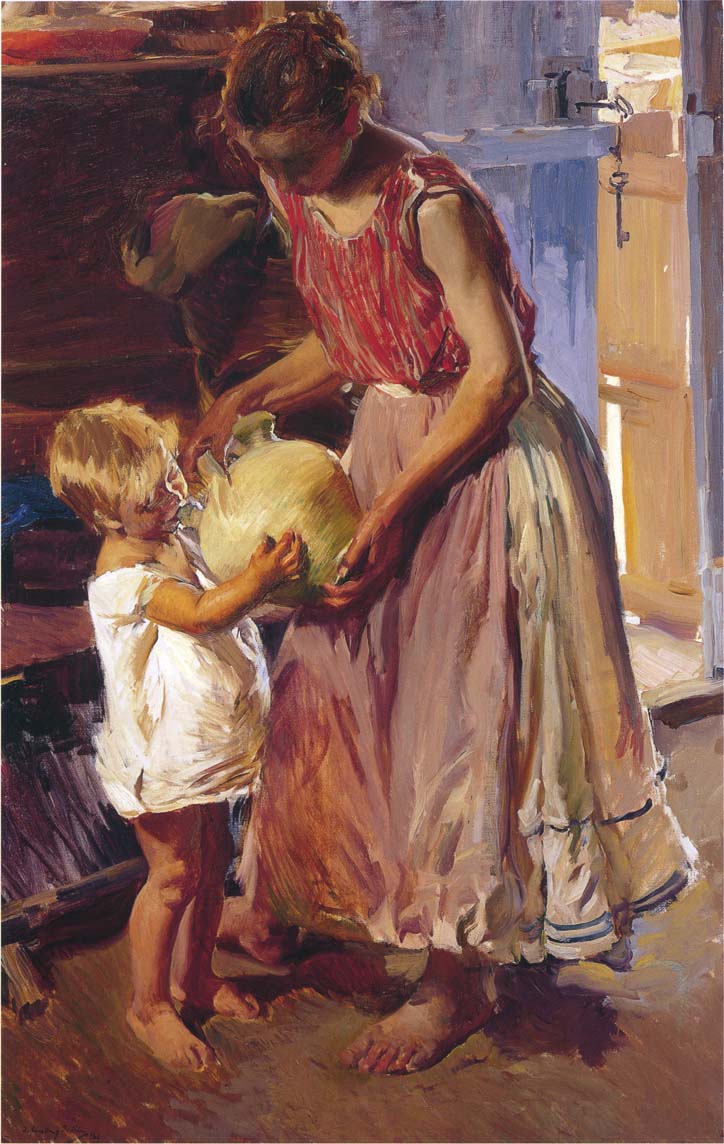botijo on:
[Wikipedia]
[Google]
[Amazon]
 A botijo, also called ''búcaro'', is a traditional porous
A botijo, also called ''búcaro'', is a traditional porous
 A botijo, also called ''búcaro'', is a traditional porous
A botijo, also called ''búcaro'', is a traditional porous clay
Clay is a type of fine-grained natural soil material containing clay minerals (hydrous aluminium phyllosilicates, e.g. kaolin, Al2 Si2 O5( OH)4).
Clays develop plasticity when wet, due to a molecular film of water surrounding the clay parti ...
container designed to contain water
Water (chemical formula ) is an Inorganic compound, inorganic, transparent, tasteless, odorless, and Color of water, nearly colorless chemical substance, which is the main constituent of Earth's hydrosphere and the fluids of all known living ...
. The botijo is a typical element of Spanish culture
The culture of ''Spain'' is based on a variety of historical influences, primarily based on the culture of ancient Rome, Spain being a prominent part of the Greco-Roman world for centuries, the very name of Spain comes from the name that the Ro ...
and may vary in shape, color and material. The botijo has the property that once filled, it cools the water that it contains, acting as an evaporative cooler
An evaporative cooler (also known as evaporative air conditioner, swamp cooler, swamp box, desert cooler and wet air cooler) is a device that cools air through the evaporation of water. Evaporative cooling differs from other air conditioning sy ...
.
The botijo has a wide belly and one or more mouths where it is filled and one or more outputs called ''pitón'' or ''pitorro'' to drink from.
The ''búcaro de Indias
In Spanish a búcaro is a general term for water jars, and a búcaro de Indias ("búcaro from the Indies") is a particular type exported to Europe, made in Tonalá, Jalisco, Mexico from the 17th century onwards.
They were made of a special type of ...
'' is a special type, made of fragrant clay from Mexico, that was prized in Europe.https://www.metmuseum.org/art/collection/search/662163
Operation
The operating principle of the botijo is as follows: the stored water is filtered through the pores of the clay and in contact with the outside dry environment (characteristic of Mediterranean climate), itevaporates
Evaporation is a type of vaporization that occurs on the surface of a liquid as it changes into the gas phase. High concentration of the evaporating substance in the surrounding gas significantly slows down evaporation, such as when humidi ...
, producing a cooling (2.219 kilojoule
The joule ( , ; symbol: J) is the unit of energy in the International System of Units (SI). It is equal to the amount of work done when a force of 1 newton displaces a mass through a distance of 1 metre in the direction of the force applied ...
s per gram of evaporated water). The key for cooling it, is by the evaporation of bleed water, as the water evaporates, it extracts thermal energy
The term "thermal energy" is used loosely in various contexts in physics and engineering. It can refer to several different well-defined physical concepts. These include the internal energy or enthalpy of a body of matter and radiation; heat, de ...
from the water stored inside the jug.
See also
*Porron
A porrón ( ca, porró) is a traditional glass wine pitcher, which holds typical of Spain, originating in Catalonia, in northeastern Spain, and eventually spreading to other parts of Spain. This invention allows everyone to drink from the same ute ...
- another distinctively Hispanic vessel
Notes
External links
Containers Spanish culture Catalan culture {{food-utensil-stub